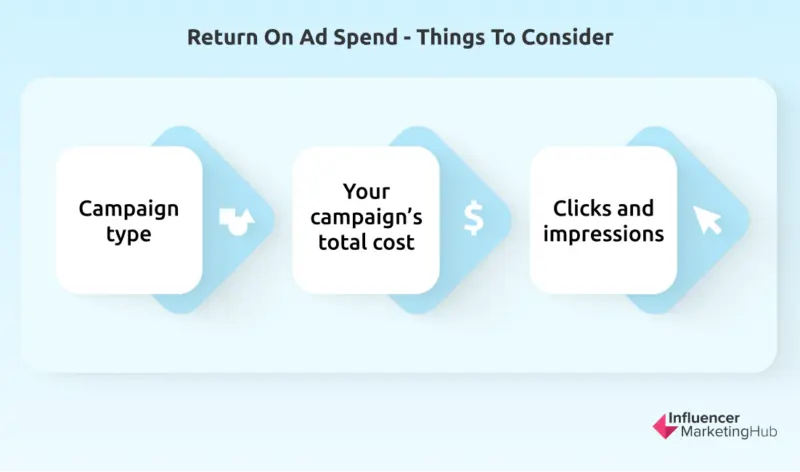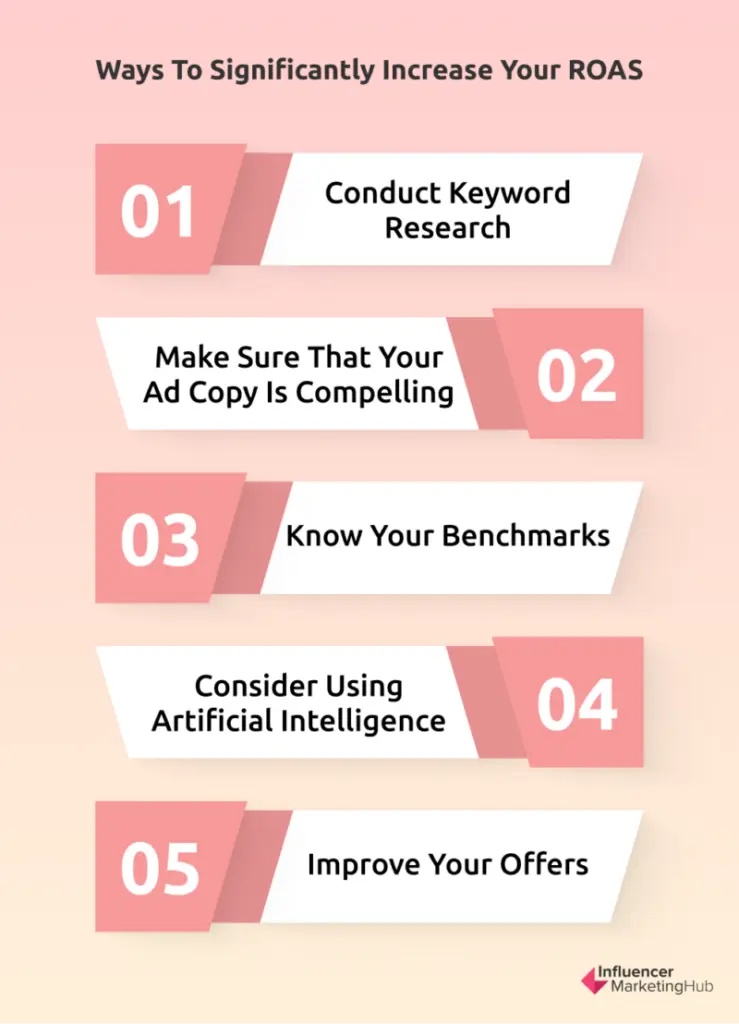Maximizing your Return on Ad Spend (ROAS) is essential for thriving in today’s competitive digital landscape. As a key performance indicator, ROAS measures how effectively your advertising generates revenue, making it crucial for evaluating your marketing campaigns.
With the rise of advanced technologies, particularly artificial intelligence, businesses now have unparalleled opportunities to enhance their advertising efficiency. In fact, studies have shown that AI-powered optimization can lead to a remarkable 252% increase in ROAS, underlining the importance of data-driven strategies.
This article will delve into the best strategies for optimizing your ROAS, from conducting comprehensive keyword research to leveraging branded campaigns. These insights will empower you to make the most of your advertising budget and enhance campaign performance, ensuring that your marketing efforts deliver tangible results. Whether you’re an experienced marketer or just starting in digital advertising, these tips will help you drive meaningful growth.
What Is Return on Ad Spend (ROAS)?
Return on Ad Spend (ROAS) is a marketing key performance indicator (KPI) used to determine how effective your campaigns are. Your ROAS indicates how much revenue your campaigns are generating for every dollar spent.
Aside from measuring your campaign’s financial returns, performance, and effectiveness, ROAS also gives you insight into which campaigns, ad groups, messages, and marketing channels are working and which ones need to be optimized.
ROAS vs. ROI
ROAS and ROI are two very different things. While both are measurement tools that can give you an idea of how well your marketing efforts are performing, they measure different things.
-
Return on Ad Spend (ROAS)
ROAS helps you measure the effectiveness and performance of your ad campaigns. Aside from showing you how much revenue your campaign manages to generate for every dollar spent, it also gives you some insights into how you can improve your marketing strategy, which channels are more effective than others, and which campaigns are performing well.
-
Return on Investment (ROI)
Calculating for your ROI lets you measure your investment in relation to other different investments and lets you determine whether or not a particular investment is a good one. There are several ways to calculate for ROI or the profit you gained from an investment, with the most common one being dividing your net return by your cost of investment and multiplying that by 100.
Another way to calculate for ROI would be to use the formula below:
In this formula, the FVI stands for the final value of your investment, while the IVI is the initial value of your investment.
Note that when we talk about “investment”, this can refer to different forms of investments including investment on ads for your campaigns, investments for building a new business, or investing in new solutions to optimize your employees’ workflow.
Meanwhile, when we refer to ROAS, we’re specifically talking about your ad spend for marketing campaigns. Your ROAS won’t show you if your advertising spend is translated into profit. It simply shows you the results of your ad campaigns and whether or not they’re effective.
How to Calculate ROAS
To calculate Return on Ad Spend, divide your total revenue by your total campaign cost. When calculating for the total campaign cost, don’t forget to factor in the fees you paid for, which can include ad agency fees, salaries for the campaign staff, and affiliate commissions.
For example, you spent a total of $2,000 on a marketing campaign, which ran for one month. During this period, the campaign generated a revenue of $20,000. Following the formula, you ROAS should be 10, or a ratio of 10:1. This means that for every dollar that you spent on your campaign, it generated revenue that’s worth $10.
Note that the sample above is a simplified take on how to calculate ROAS. Before you begin calculating your ROAS, there are some components that you need to consider.
Key Considerations When Calculating ROAS
The formula for calculating ROAS seems simple enough but there are some key considerations to keep in mind when figuring out your ROAS. These include:
Campaign type
Your campaign type also plays a role in how you approach calculating ROAS. For example, if you’re running a paid search campaign, you need to consider additional factors, such as how much a new lead is worth and what your total profit margin is.
Your campaign’s total cost
Your campaign’s total cost includes all the fees incurred while running your campaign. The total cost can include fees for services and vendors, such as agencies, designers, affiliates, email marketers, content writers, salaries of the in-house employees who worked on the campaign, and overhead costs for the rental or purchase of equipment or other materials used for the campaign. You also have to include costs for bidding on keywords or running a PPC campaign.
Factoring in the total cost of the campaign, including the hidden costs, gives you a more accurate ROAS which, in turn, can better show how effective your campaign is.
Clicks and impressions
To get a more accurate ROAS, you also need to factor in other metrics such as how much you paid for 1,000 impressions, click-through rate, and average cost per click.
Why ROAS Matters
Analyzing your ROAS provides you with accurate data and allows you to evaluate your ad campaign’s performance. If you run multiple ads, knowing the ROAS of each one lets you identify which ad types, messaging, and channels are the top performers. Your ROAS also give you a glimpse of which campaigns need to be adjusted so that they can meet your marketing objectives.
ROAS can also tell you how your ad campaigns are performing relative to the other marketing strategies you’re implementing. However, if you want a more in-depth view of your marketing channels, measuring your return on investment paints a clearer picture of how your marketing programs are contributing to your business’s growth.
Another benefit to measuring ROAS is that it lets you make better, data-driven marketing decisions. When you know your ROAS, you won’t have to guess which channels or campaigns are working and which ones need to be improved on.
Using an eCommerce growth software, such as Pacvue, can help you improve campaign performance and improve ROAS.
With Pacvue, you can leverage features such as rule-based automation, AI optimization, and campaign suggestions to optimize your marketing campaigns. Conveniently adjust bids, keywords, and budgets based on your business goals. Furthermore, Pacvue can help you minimize ad spend waste through features like dayparting and multiple budget management settings.
Pacvue’s automated suggestions allows you to adjust bids based on keyword performance, as well as view different keyword recommendations for different ad types like Sponsored Products, Amazon DSP, and Instacart Display. Pacvue also has an Enhanced Keyword Research Tool that lets you easily find new and related keywords and incorporate those keywords to relevant Ad Groups.
6 Proven Strategies to Improve Your ROAS
-
Use Negative Keywords
According to Google Ads, negative keywords are search terms that you want to exclude from your campaigns.
Running a successful ad campaign isn’t just about knowing what keywords you need to target. It’s also knowing about which ones you should exclude. Using negative keywords allows you to target what it is exactly that your customers are looking for. This means that your ads won’t appear in searches with negative keywords.
Negative keywords may seem similar to your target keywords. However, they could cater to audiences who are looking for a different solution and could cause your ads to appear in irrelevant searches. For example, if you’re selling concert tickets, you may want to exclude negative keywords for other search terms like “traffic tickets” or “flight tickets”.
-
Optimize Your Landing Pages
Optimizing your landing pages enables you to provide your audience with better experiences in terms of page load speed and usability, which can attract and compel them to purchase your products. When someone clicks on your ad and is redirected to a slow-loading and difficult-to-navigate landing page, it’s likely that they’ll bounce, causing you to lose leads and sales.
Optimizing your landing page isn’t just about improving page load speed, removing clutter, and making it user-friendly. It also means that you should optimize it for mobile phones, as well as for other devices like tablets or laptops. The good news is, there’s a wide array of landing page builder software options that you can use to create better landing pages.
-
Reduce Ad Spend
Improving your ROAS doesn’t necessarily mean that you have to spend more. It could mean that you need to rework your ad spending budget so that it’s optimized. As always, it pays to perform tests to see if reducing your ad spending will actually work for your business.
-
Work Toward Increasing Customer Lifetime Value (CLV)
Acquiring new customers is often more expensive that retaining your current ones. To boost your ROAS in 2025, you may want to consider working toward nurturing customer loyalty to increase your CLV.
-
Create Personalized Experiences
Creating personalized experiences can be a rewarding endeavor for both you and your customers. Today’s customers expect businesses to be able to anticipate and cater to their unique needs. By serving personalized ads and experiences, you’re targeting specific customers while making them feel that you care about their interests and what they have to say. Moreover, building personalized experiences will most likely compel your audience to make a purchase instead of making them go away by showing them irrelevant ads.
-
Look Into Branded Campaigns
Running a branded campaign is one way to boost your ROAS in 2025. When you run a branded PPC campaign, you’re targeting your business’s name and bidding on it. When someone performs a search using your brand name, it implies that they want to engage with your brand. If you aren’t running a branded campaign, when someone searches for a product or service that’s similar to yours or is in the same industry, chances are, your competitor’s name will most likely appear.
It’s also worth noting that you shouldn’t forgo testing your campaigns. Use split testing to see how each aspect of your campaign is performing. Aside from continuously testing your ad campaigns, you also need to adjust them accordingly. If you see that a particular version of your ad copy isn’t working, then you may want to craft a more compelling version. If your current offers aren’t driving conversions, try introducing upsells or cross-selling offers to your audience.
5 Best Practices to Increase Your Return on Ad Spend
-
Conduct Keyword Research
Keyword research is one of the foundations of running successful ad campaigns. When you know the right keywords to use, you’re better able to reach your target audience. Having the right keywords can also help drive high-quality traffic to your eCommerce website.
-
Make Sure That Your Ad Copy Is Compelling
Writing ad copy that converts can be a challenging feat. Compelling ad copy should be able to showcase your brand’s unique value proposition. It should also show your target audience how you can help solve their pain points. Your ad copy has to be clear, concise, and relevant to your target audience.
How will you know if your ad copy is effective? Test it out. You can use A/B testing to test different versions of your ad copy to see which ones get more clicks or conversions.
-
Know Your Benchmarks
Having benchmarks can help you create goals that are measurable and realistic. They can also help you manage your expectations. Common benchmarks include click-through rate (CTR), conversion rate, cost per action, and cost per click.
-
Consider Using Artificial Intelligence
AI can help you optimize your bids in real time, allowing you to maximize your campaign’s value and minimize loss of revenue. A digital ad platform can help you automatically adjust your bids, while factoring in important variables such as your target audience’s shopping behaviors and location.
-
Improve Your Offers
Improving your offers means tailoring them according to factors like seasons and events. Run relevant ads at optimal times or when your customers are most engaged, such as during holidays or local special events. Aside from improving your offers, you can also tweak your website so that it coincides with the occasion. You can also incorporate upsell or cross-sell offers, as well as bundle offers.
Optimizing Your ROAS in 2025
Measuring your ROAS lets you optimize your ad campaigns so that they’re better able to meet your marketing objectives. Getting a low ROAS means that you need to determine what factors could be causing the problem. Some of the issues that impact your ROAS and bring it down include having a low Google Quality Score, having a lot of unsatisfied customers during the post-click stage, and unoptimized offers.
The good news is that you can take steps to bring your ROAS back up. Your ROAS is one of the growth indicators you can’t ignore as it tells you if you’re spending your ad budget efficiently or not. Following the strategies and best practices that we’ve shared in this
Frequently Asked Questions
Why is Return on Ad Spend important?
Return on Ad Spend is a key performance indicator (KPI) lets you evaluate how effective your ad campaigns are and whether or not they’re performing well. ROAS also shows you how a campaign affects your business’s bottom line. When combined with eCommerce analytics, ROAS can give you comprehensive insights that will enable you to make data-driven, informed decisions.
How do I calculate ROAS?
To determine how much revenue a campaign generates for every dollar spent, divide your total revenue by the total campaign cost. Note that you also need to include hidden costs such as overhead cost and fees for services, as well as clicks and impressions.
What can be considered as a “good” ROAS?
There’s no right or wrong answer to what a good ROAS is as it can vary greatly from one business, platform, or campaign to another. Other factors that come into play include your profit margins, average CPC, and even your industry.
In general, most companies ideally want to achieve a 4:1 ratio, or generate $4 in revenue for every dollar spent on the campaign. As mentioned earlier, the platform you use for your campaigns can also influence what is considered as a “good” ROAS. For example, if you’re using Google Ads, the average ROAS would be 2:1.










